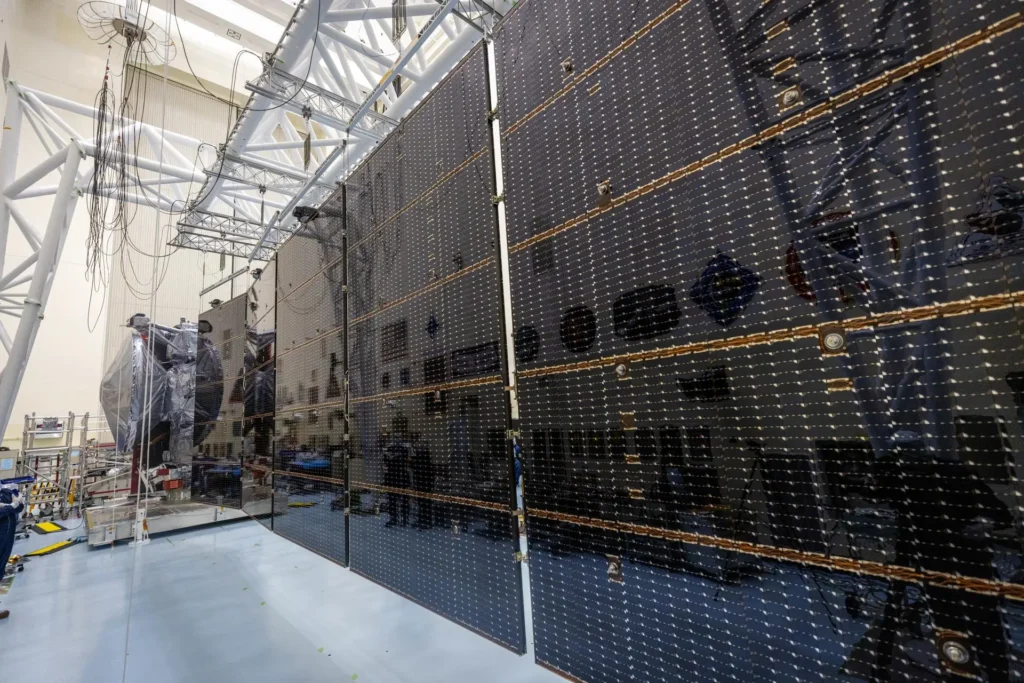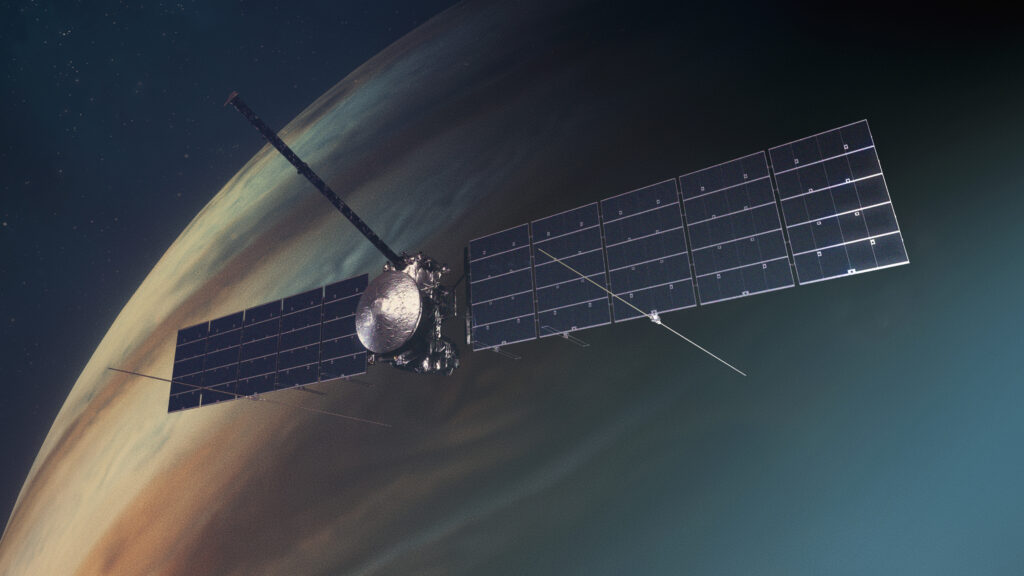September 9, NASA held a briefing on the status of readiness of the Europa Clipper. It was confirmed that the mission would go to Jupiter next month.

Europa Clipper is NASA’s flagship mission. Its target is Europa, a moon of Jupiter, which hides a vast ocean of liquid water beneath its icy surface. During a series of several dozen close flybys, the spacecraft will have to study the characteristics of this ocean and assess its viability.
For this purpose, the vehicle is equipped with a set of nine scientific instruments including cameras, spectrometers, subsurface radar and a magnetometer. Europa Clipper also received the largest solar arrays ever installed by NASA on an interplanetary mission. When fully deployed, their span will exceed 30 meters, which is larger than the size of a basketball court. This impressive size is due to the fact that Jupiter is far from the Sun and its neighborhood receives only 3% to 4% of the amount of sunlight that reaches Earth.
Europa Clipper launch date
The Europa Clipper was scheduled to be launched by NASA in October 2024. However, until recently, many people had doubts that the vehicle would actually fly this year. The thing is that in May, it turned out that some of the transistors installed on board the vehicle failed at lower radiation doses than expected. This could threaten the success of the mission — because Jupiter is surrounded by powerful radiation belts.

Therefore, engineers at NASA’s Jet Propulsion Laboratory have been thoroughly testing the vehicle’s electronics all of recently to see if they need to be replaced. If such a decision had been made, the launch of the Europa Clipper would have been delayed by at least a year. But fortunately, experts concluded that the transistors’ safety margin was still sufficient to meet the mission’s needs. Therefore, it was decided not to change the launch date.
The 21-day ballistic window for the Europa Clipper flight will open on October 10. A Falcon Heavy rocket will be used to launch the mission. To get to Jupiter, the craft will need to perform two gravitational maneuvers — one in the vicinity of Earth and one near Mars. Europa Clipper is due to enter orbit around the gas giant in the summer of 2030.
Earlier we told you about the message the Europa Clipper would take with it.


